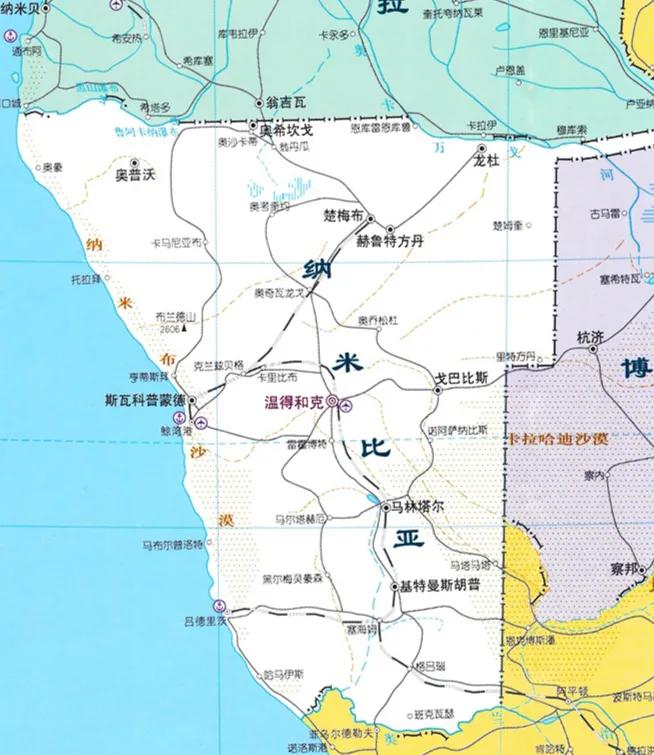The last country on the African continent to gain national independence was Namibia, which became independent on March 21, 1990, and the next day the continent established diplomatic relations with Namibia, which shows that the relationship between the continent and Namibia is very good.

Map of Namibia, coastal zone is the Namib Desert
Namibia is located in southwest Africa, bordering Angola to the north, Zambia to the northeast, Botswana to the east, South Africa to the south, and the Atlantic coast to the west. Namibia has 1600 kilometers of coastline, but such a long coastal area is desert, called the Namib Desert, which means "nothing".
The Namib Desert is located on the southwest coast of Africa
The Namib Desert is the narrowest coastal desert in the world, starting in Angola and ending at the Orange River, the border between Namibia and South Africa. The Namib Desert stretches for 2,100 kilometers along the Atlantic coastline, of which 1,600 kilometers are off the coast of Namibia, and the width of the desert is about 50 to 160 kilometers, which means that the entire coastal zone of Namibia is desert.
Namib Desert
The Namib Desert on the Atlantic coast
A small desert town by the sea
Why is there such a long desert off the coast of Namibia? This is because the air blowing from the Atlantic Ocean to southwest Africa encounters the cold Benjira Current, which makes the humid air dry and quickly cools down and sinks, creating an arid climate. As a result, the annual rainfall of the Namib Desert is less than 10 mm, and the desert area without rain is almost grassless.
Namibia's coastal desert has very little rainfall and is greatly affected by fog, which has become the main source of water here, forming a unique tropical desert ecological environment. In the desert off the coast of Namibia there are some succulents that survive by absorbing the moisture in the fog.
Plants in the Namib Desert
Namibian desert plants
On the edge of the Namib Desert, there are also some bushes and meadows, and where there are rivers, there are tall trees growing along the riverbank, mainly acacia trees. These green vegetation areas are home to ostriches, East African antelopes, springboks, zebras, lions, hyenas, jackals, geckos, snakes, as well as birds such as red storks, pelicans, flamingos and even seals and penguins along the southern coast of Namibia.
Flamingos by the desert
Antelope in the desert
These flora and fauna are the tenacious creatures of the Namib Desert, guarding this magical coastal desert in southwest Africa. The Namib Desert has nothing on the surface, but in fact it is a beautiful landscape, with the Atlantic Ocean on one side and the desert on the other. At the end of the ocean is the desert, the desert is the sea of death, this is the magic of Africa, the amazing nature.